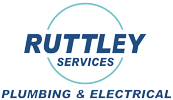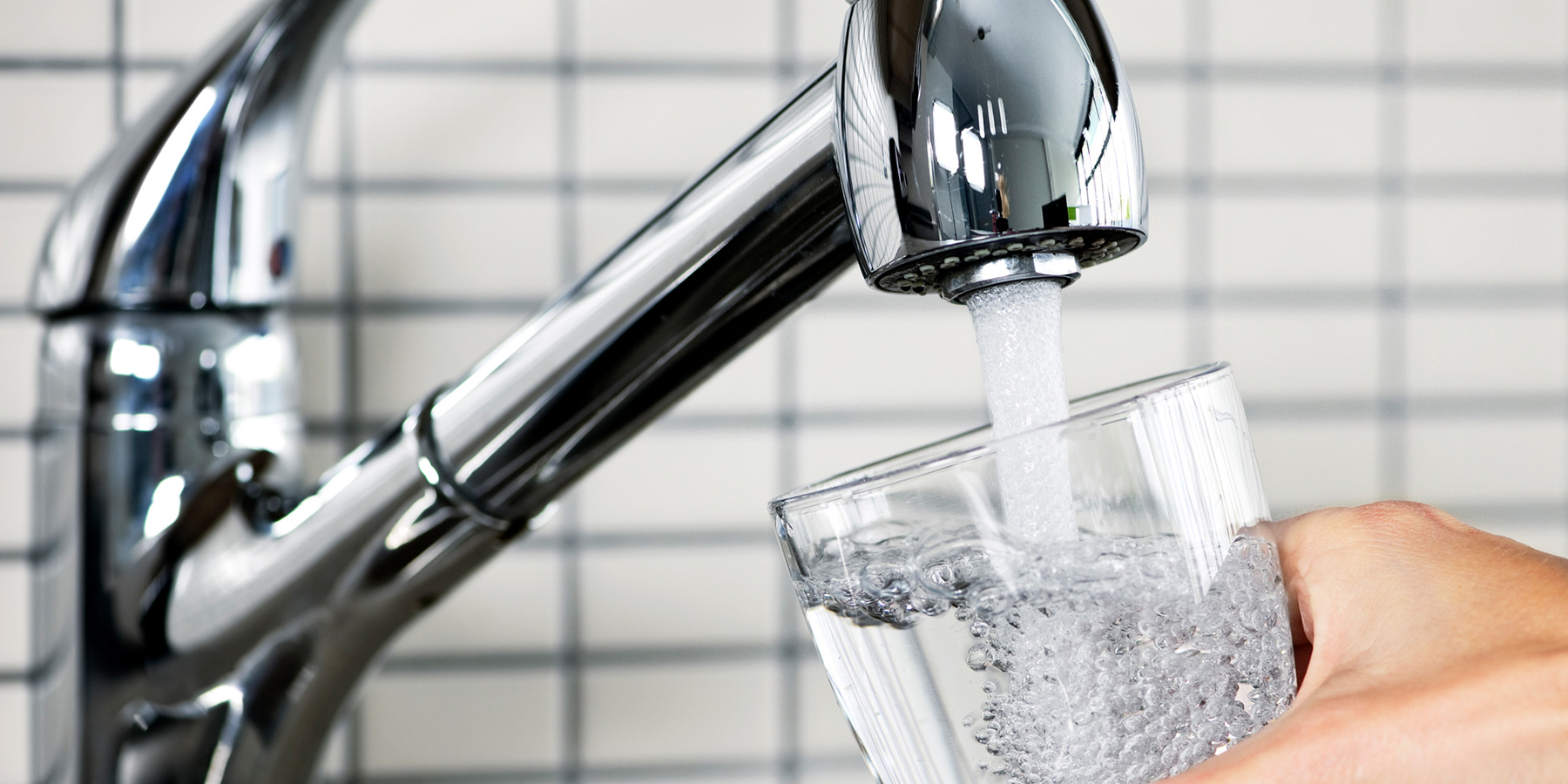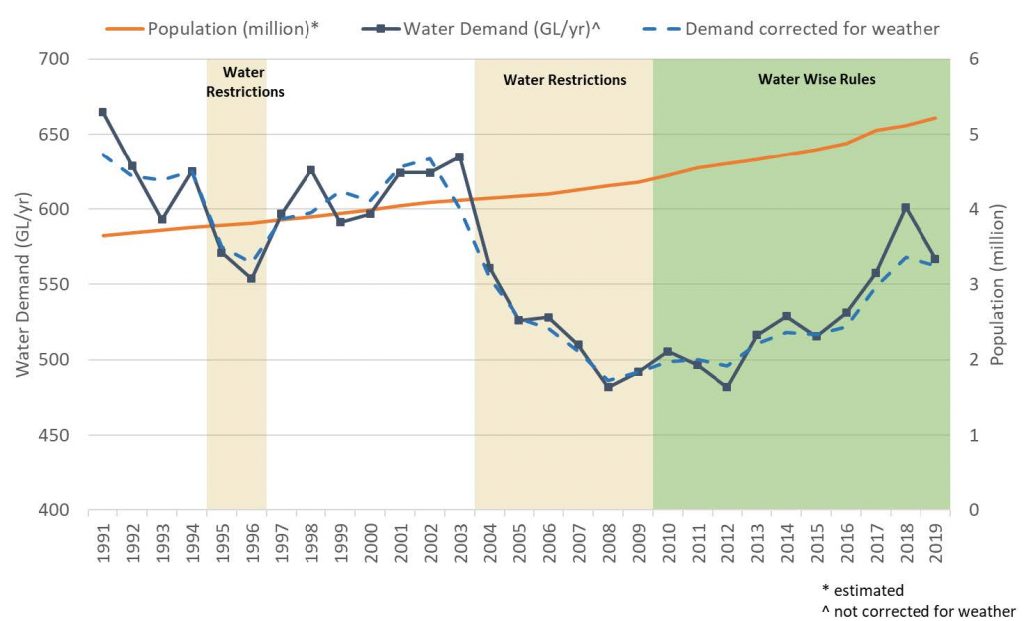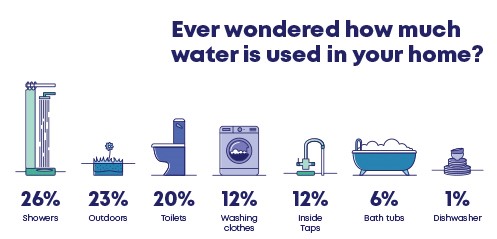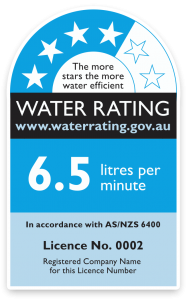Want to save money on your Sydney water bill?
Good news is that under the current pricing structure you should be saving money, so long as dam levels stay above 60% capacity. Don’t let potential cost savings make you blasé about your water use though. If we don’t save water and dam levels fall below 60% as they did last summer (2019), then we can expect a 35% price increase for drinking water.
| Sydney Drinking Water Supply | 2020 – 2021 Cost ($) | |
| Per Kilolitre | Per Annum | |
| Normal | $2.35 | $479.02 |
| Dams < 60% | $3.18 | $648.21 |
| Recycled | $2.12 | $432.14 |
| Sydney Olympic Park Recycled | $2.20 | $448.45 |
| Sydney Olympic Park Dams < 60% | $3.03 | $617.64 |
Table 1.1 Cost of drinking water showing prices per kilolitre and cost per annum for the average sized household (2.8 people) in the Greater Sydney Region.
Although we have some of the lowest prices for water in Australia, if you live in Sydney the average household is already paying more for water than homes in Melbourne, based on the simple fact that we use about 40 litres more, per person, per day.
Here in Sydney, we use on average 200 litres per person, per day, meaning the average annual cost for one person’s supply of drinking water has increased from about $153 to $171. How much of that water is wasted? It is hard to quantify but several factors including; weather and pricing structure, contribute to our higher water use.
Perhaps in an effort to reduce Sydney’s water use the new pricing structure introduced, 1 July increased the cost per one thousand litres (l) or per kilolitres (kl) of drinking water used. You can also expect a significant 35% increase on the cost per kilolitre when dam levels fall below 60%, making the Sydney water pricing models more like VIC and SA, that employ financial incentives to save water. Although the cost of drinking water has increased, it is more than offset by the reduced price across all the other charges included on your average bill from Sydney Water.
Source: Sydney Water
New Four-Year Pricing Structure for NSW Water July 2020 – 2024
The Independent Pricing and Regulatory Tribunal (IPART) exists to ensure fair prices for consumers by setting the price for water at a point that reflects the cost of providing efficient services. In July 2020 IPART increased water usage charges for Sydney while reducing the fixed charges for water and wastewater meaning households have financial incentive to save water, at all times. A flexible water usage price was also introduced. The 35% price increase when dams fall below 60% will effectively reward households that proactively reduce their water consumption during times of water restrictions.
Components of Cost on Water Bills in Sydney
In Sydney, your quarterly water bills are made up of service charges, usage charges and other charges. In this pricing breakdown, we focus on residential water bills which exclude the trade waste charges applied to businesses and non-residential properties. Typical charges for your home or unit water and wastewater bills are:-
- Drinking-Water Used
- Water Service Fixed Charge
- Wastewater Service Fixed Charge
- Stormwater Service Fixed Charge
- Rouse Hill stormwater
- Rouse Hill Land Charge
- Unmetered Water
- Other Fees
Sydney Drinking Water, User Pays.
The cost of drinking water has increased. Now, keeping in mind that your actual water bill can be higher or lower depending on water restrictions, the time of year and your typical water usage – we offer a breakdown of the average household cost of drinking water based on the following averages:
- Drinking water per person, per day = 200 litres (l) or 0.2 kilolitres (kl)
- Greater Sydney region household size = 2.8 people
| No. Residents | Person per day (kl) | Per Day (kl) | Per Week (kl) | Per Annum (kl) |
| 2.8 | 0.2 | 0.56 | 3.92 | 203.84 |
Table 1.2 Average household water consumption in kilolitres
The average household, uses 0.56 kl per day, 3.92 kilolitres (kl) per week and 203.84 kl each year. With metered drinking water now costing $2.35 per kl the average household can expect to pay $9.21 a week or $479.02 per annum at normal pricing. Outside of the Sydney Olympic Park Authority area, the average home will save almost $50 a year on the above annual price if you are in a recycled drinking water system.
But be warned that if dam levels drop below 60% the average household instead pays $12.47 per week. That difference of $3.25 per week may seem like pocket change but it represents a 35% increase from the normal price per thousand litres. If we were to pay the increased charge for a full year and continue to use 200 litres per day then it would cost the average home $648 which is almost $170 more per annum.
| Sydney Drinking Water Supply | 2020 – 2021 Cost ($) | |||
| Price ($) Per kl | Per Day (kl) | Per Week (kl) | Per Annum (kl) | |
| Normal | $2.35 | $1.32 | $9.21 | $479.02 |
| Dams < 60% | $3.18 | $1.78 | $12.47 | $648.21 |
| Recycled | $2.12 | $1.19 | $8.31 | $432.14 |
| Sydney Olympic Park Recycled | $2.20 | $1.23 | $8.62 | $448.45 |
| Sydney Olympic Park Dams < 60% | $3.03 | $1.70 | $11.88 | $617.64 |
Table 1.3 Cost of drinking water based on average household size and use
A price increase during times of water restrictions also applies within the Sydney Olympic Park Authority area, where rather than paying $2.20 per one thousand litres of recycled water you will be charged $3.03 per one thousand litres. Only once dam levels exceed 60% will pricing return to normal.
Water, Wastewater & Stormwater Service Fees
Paid each quarter, the water and wastewater service costs are a fixed charge for your connection to the Sydney water and wastewater network. So long as you are connected you pay for these, even if your house or apartment is empty. The fixed charge for stormwater only applies to homes within the defined stormwater catchment areas and the cost will be clearly stated on your bill.
| Fixed Charge | 2019-2020 | 2020-2021 | Low Supply | Savings |
| Water Service | ||||
| Metered | $24.30 | $10.06 | $14.24 | |
| Unmetered | $119.77 | $116.68 | $154.33 | $3.09 |
| Wastewater | $154.76 | $137.25 | $17.51 | |
| Stormwater | ||||
| House | $19.83 | $19.55 | $0.28 | |
| Unit | $6.19 | $6.25 | -$0.06 |
Rouse Hill Storm Water Drainage Fee
If you live in the Rouse Hill area you incur additional charges each quarter to supplement the cost of local water management. The fixed stormwater drainage charge is used to help maintain the stormwater wetlands and waterways. The land charge – which only applies to properties connected to the Sydney Water service anytime since 1 July 2012 – contributes to the cost of purchasing the floodways and flood-prone land that form part of the stormwater drainage systems.
| 2019-2020 | 2020-2021 | Savings | |
| Rouse Hill Stormwater | $37.52 | $37.03 | $0.49 |
| Rouse Hill Land | $97.88 | $85.25 | $12.63 |
Other Charges
- Dishonour payment fees: If your financial institution declines your water bill payment and payment arrangements are dishonoured you are charged a dishonour fee plus any associated bank fees.
- Late Payment Fees: Sydney Water can charge a late payment fee or interest if your bill is not paid by the due date stated on your water bill. They may charge interest on the money owed and if the interest becomes more than the late payment fee, you will be charged the accrued interest instead.
- Meter Reading: Water meters are normally read once every three months. Households preferring to be billed monthly for their water and wastewater will pay an additional fee to have the meter read each month.
Seven Sure Ways to Save Water in Your Home
We use water for a myriad of things in our day to day lives everything from drinking, cooking, washing to growing food, keeping cool and recreation activities. We need water for our pets to drink, to fight fires and to produce products and services. The current pricing structure provides something of a financial incentive to start reducing our water use.
Source: Sydney Water
The cumulative impact of wasted water can make all the difference in times of drought. The simple fact is that if you want to save on the cost of your water bills, the best bet is to become conscious about your water consumption and reduce waste where you can.
- Turn taps on and off, as needed. This means turn the tap off while you brush your teeth and put the plug in when rinsing dishes instead of running the water down the drain.
- Fix leaking taps, pipes and toilets. A dripping tap can waste up to 2,000 litres of water a month.
- Shower instead of running a bath, as showering can save water provided you’re not in there for half an hour or more. Replacing old shower heads can further reduce water use and water rating labels can help you compare and select the most water-efficient fixtures.
- Modern dishwashers will use less water than hand washing, just remember to use the short or eco cycle where available and only start the dishwasher once it is full. That said, don’t overload your dishwasher either or you may end up washing dishes a second time.
- Front Loading washing machines use less water than top-loading but in either case, washing a full load will reduce the water usage. Use the Eco cycle on your washing machine if available and make smart choices on your next purchase by comparing the water rating labels
- Use the half flush on the toilet, and if you don’t need to flush take that option. It’s a bit cringe-worthy but I read this in a toilet once – “If it’s not yellow let it mellow, number two flush the loo.”
- Use a broom or a rake to remove leaves and debris from the driveway as opposed to the hose.
Six-Star Water Rating Labels

Source: Water Rating
In Australia and New Zealand washing machines and dishwashers as well as fixtures that use water – toilets, showerheads or taps – are required to show a water rating label.
The blue water rating label:
- displays a six-star rating to help consumers compare the efficiency of different models.
- indicates water consumption so you can estimate how much water the product will use
- provides registration and product details for washing machines and dishwashers.
Basically, the more stars the more efficient the model, the less water it will use, meaning the less water you will pay for.
No Interest Loan Scheme (NILS)
If you are interested in saving on your water bills by replacing older washing machines or dishwashers the No Interest Loans Scheme (NILS) can provide access to safe, fair and affordable loans without credit checks, fees, interest or charges. Repayments are set at an affordable amount over 12 to 18 months.
To be eligible for NILS you must:
- have a health care card/pension card or earn less than $45,000 a year after tax, $60,000 after tax for joint applicants or people
- with children
- have lived in your current residence for a minimum of 3 months
- show a willingness and capacity to repay the loan.
To check your eligibility and find your nearest loan provider visit the NILS website.
Supplying water to a city of more than 5 million residents is no small task but as competition in the industry increases consumers can expect to see normal water pricing decrease again thanks to innovations within the industry that improve the efficiency of water supply, delivery and maintenance.
Water and sewer lines once on private property are the responsibility of the property owner. As is the upkeep of your homes plumbing. That’s where the trusted professionals at Ruttley Plumbing can help. Our team of licensed plumbers and gasfitters are available 24/7 for plumbing emergencies and during business hours Monday to Friday. We provide a fixed price up-front before we start work, so you don’t need to worry about hidden costs. Reliable, responsive and reassuring service, guaranteed.
